Supermicro 2049P-TN8R Performance
For this exercise, we are using our legacy Linux-Bench scripts which help us see cross-platform “least common denominator” results we have been using for years as well as several results from our updated Linux-Bench2 scripts. Starting with our 2nd Generation Intel Xeon Scalable benchmarks, we are adding a number of our workload testing features to the mix as the next evolution of our platform.
At this point, our benchmarking sessions take days to run and we are generating well over a thousand data points. We are also running workloads for software companies that want to see how their software works on the latest hardware. As a result, this is a small sample of the data we are collecting and can share publicly. Our position is always that we are happy to provide some free data but we also have services to let companies run their own workloads in our lab, such as with our DemoEval service. What we do provide is an extremely controlled environment where we know every step is exactly the same and each run is done in a real-world data center, not a test bench.
We are going to show off a few results, and highlight a number of interesting data points in this article.
Python Linux 4.4.2 Kernel Compile Benchmark
This is one of the most requested benchmarks for STH over the past few years. The task was simple, we have a standard configuration file, the Linux 4.4.2 kernel from kernel.org, and make the standard auto-generated configuration utilizing every thread in the system. We are expressing results in terms of compiles per hour to make the results easier to read:
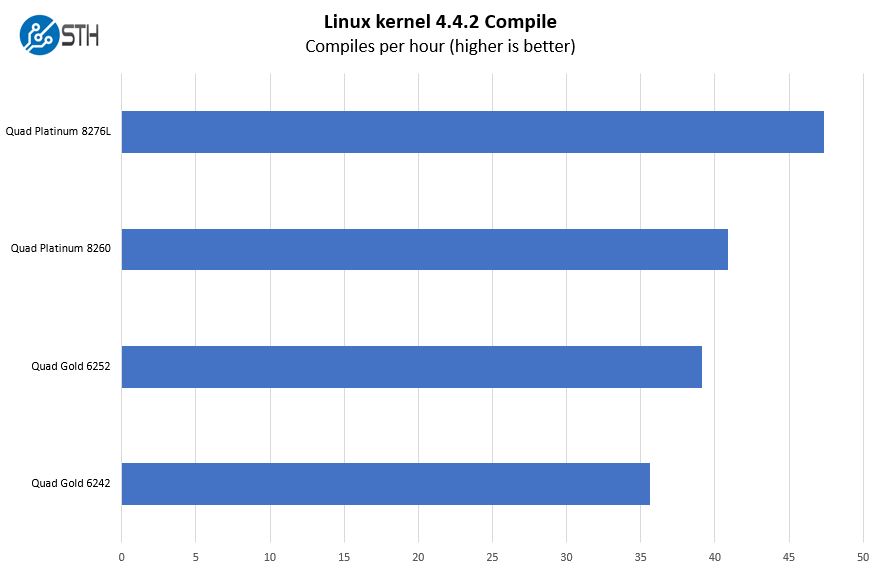
Here we can see 96 cores and 192 threads performing well, however there are higher-end options. From an efficiency perspective, the quad Xeon Platinum 8276L configuration is better here.
c-ray 1.1 Performance
We have been using c-ray for our performance testing for years now. It is a ray tracing benchmark that is extremely popular to show differences in processors under multi-threaded workloads. We are going to use our 8K results which work well at this end of the performance spectrum.
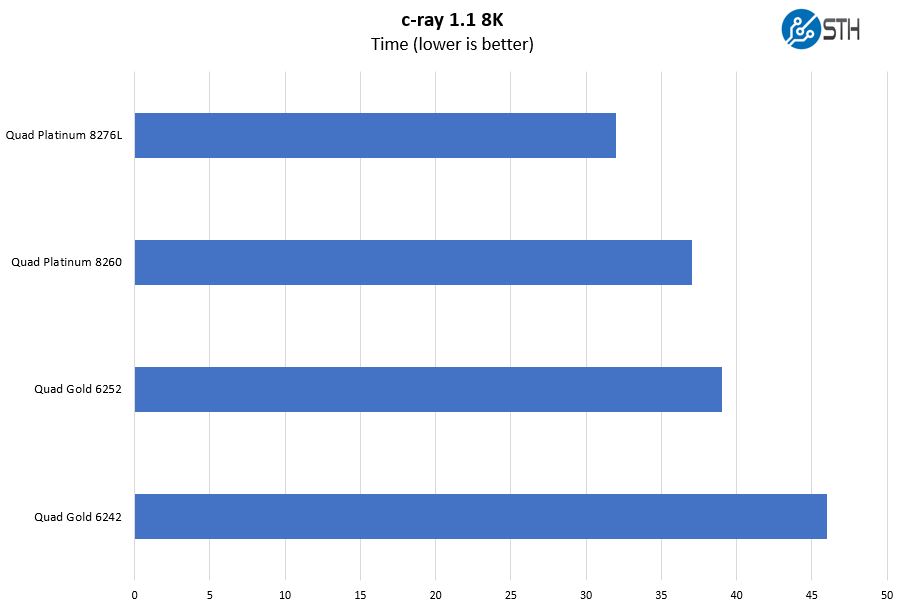
There are other interesting configurations. One we are showing is of quad Intel Xeon Gold 6242 16-core processors. This 16-core processor count aligns well with per-core licensed software and also applications such as Windows Server.
7-zip Compression Performance
7-zip is a widely used compression/ decompression program that works cross-platform. We started using the program during our early days with Windows testing. It is now part of Linux-Bench.
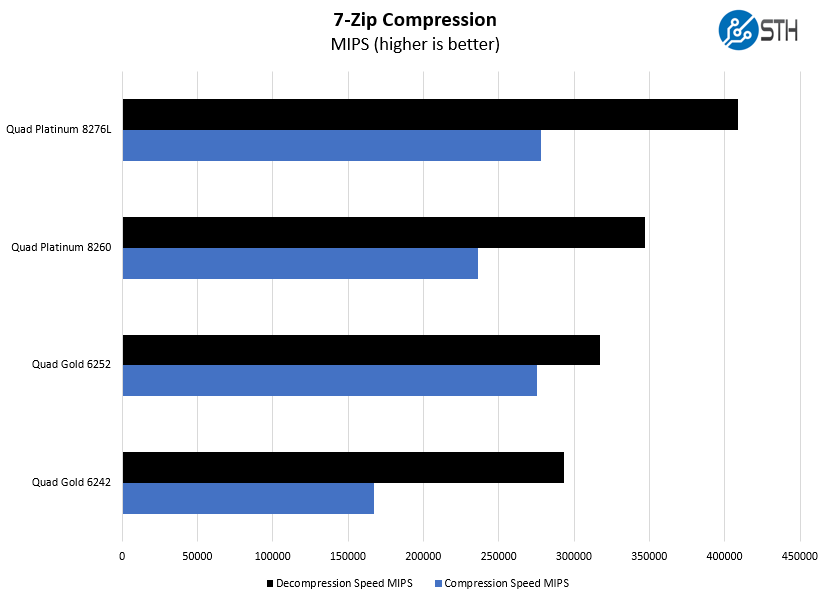
Here the quad Intel Xeon Gold 6252 system gave us relatively better compression to decompression ratios than the other configurations.
NAMD Performance
NAMD is a molecular modeling benchmark developed by the Theoretical and Computational Biophysics Group in the Beckman Institute for Advanced Science and Technology at the University of Illinois at Urbana-Champaign. More information on the benchmark can be found here. With GROMACS we have been working hard to support AVX-512 and AVX2 supporting AMD Zen architecture. Here are the comparison results for the legacy data set:
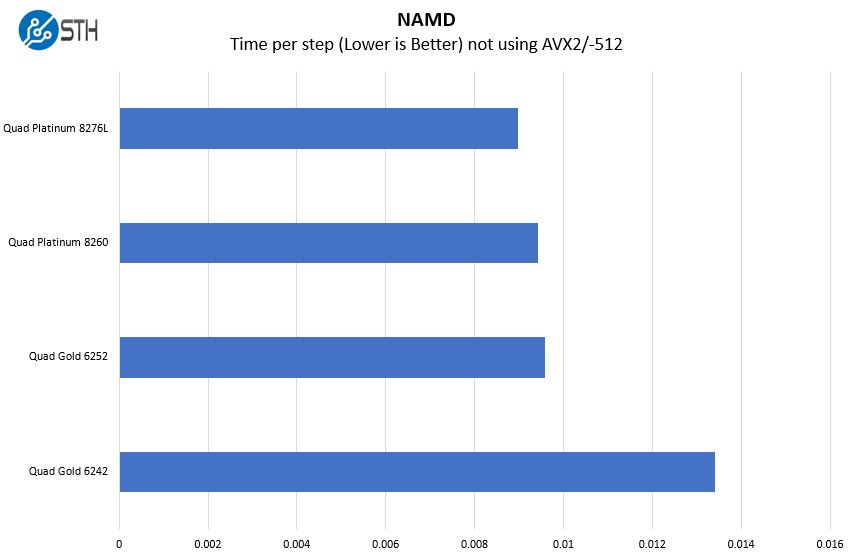
We have had this workload for some time. One of the interesting aspects we are seeing is that the performance is relatively close among the 20+ core Xeons here.
OpenSSL Performance
OpenSSL is widely used to secure communications between servers. This is an important protocol in many server stacks. We first look at our sign tests:
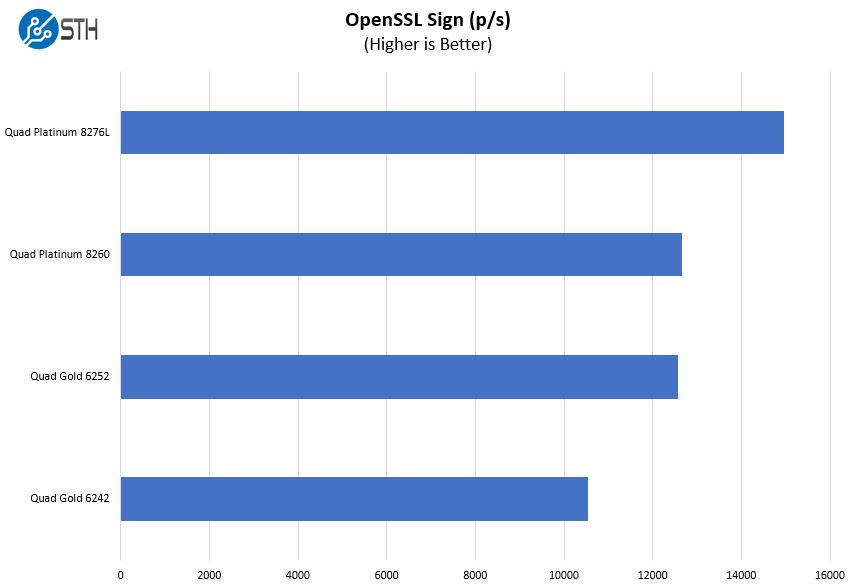
Here are the verify results:
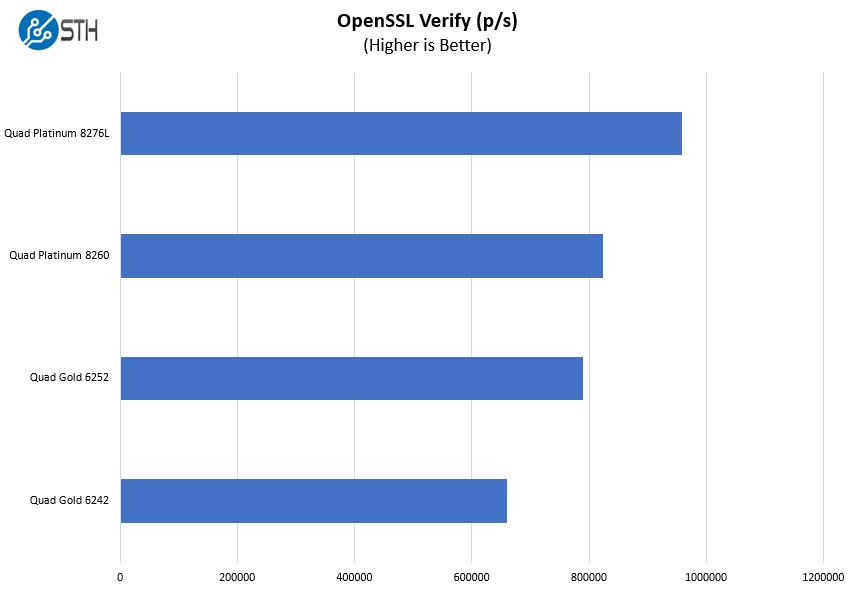
Here we see performance results about where we would expect with the 4P Xeon Gold 6252 configuration. One will notice that the quad Intel Xeon Platinum 8260 configuration is slightly faster in all of these benchmarks.
UnixBench Dhrystone 2 and Whetstone Benchmarks
Some of the longest-running tests at STH are the venerable UnixBench 5.1.3 Dhrystone 2 and Whetstone results. They are certainly aging, however, we constantly get requests for them, and many angry notes when we leave them out. UnixBench is widely used so we are including it in this data set. Here are the Dhrystone 2 results:
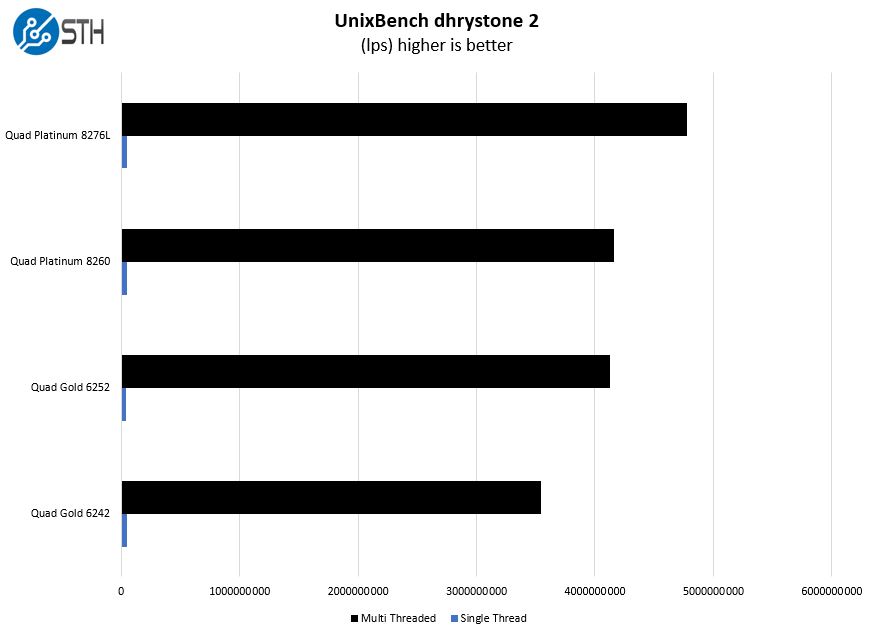
Here are the whetstone results:
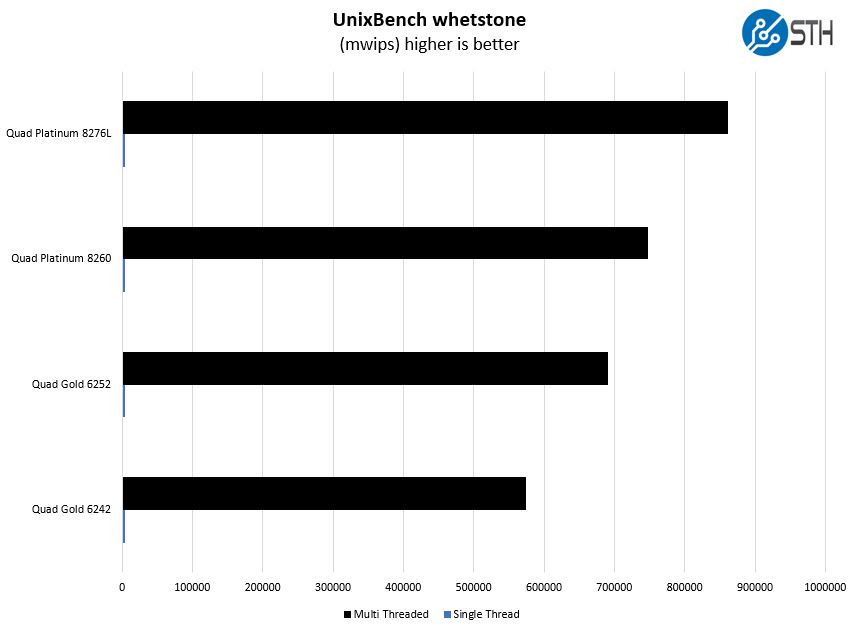
These benchmarks follow the pattern we have seen a few times before. The single-threaded performance gets lost in our standard charts on the four-socket scale.
Chess Benchmarking
Chess is an interesting use case since it has almost unlimited complexity. Over the years, we have received a number of requests to bring back chess benchmarking. We have been profiling systems and are ready to start sharing results:
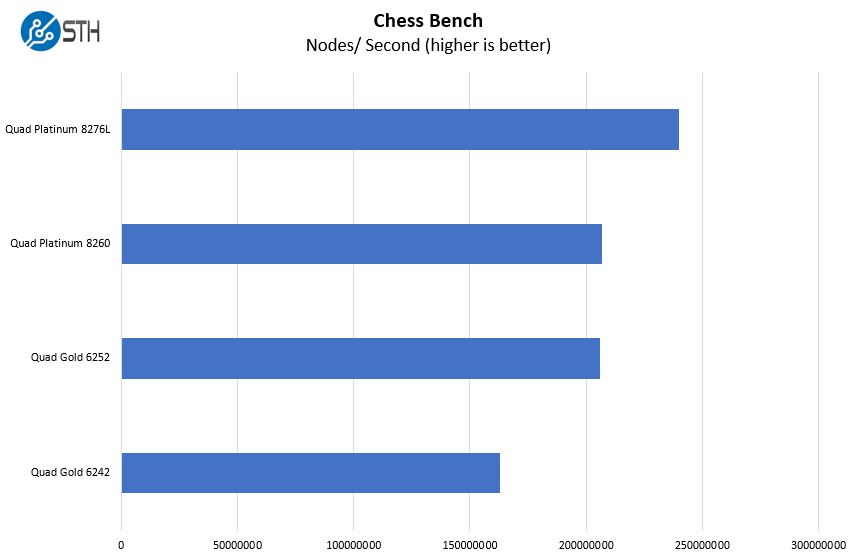
One can again see the stark contrast between the 24 and 28 core offerings over the 16-core Gold 6242.
GROMACS STH Small AVX2/ AVX-512 Enabled
We have a small GROMACS molecule simulation we previewed in the first AMD EPYC 7601 Linux benchmarks piece. We are not publishing results of the newer revision here since they are not compatible with our previous results.
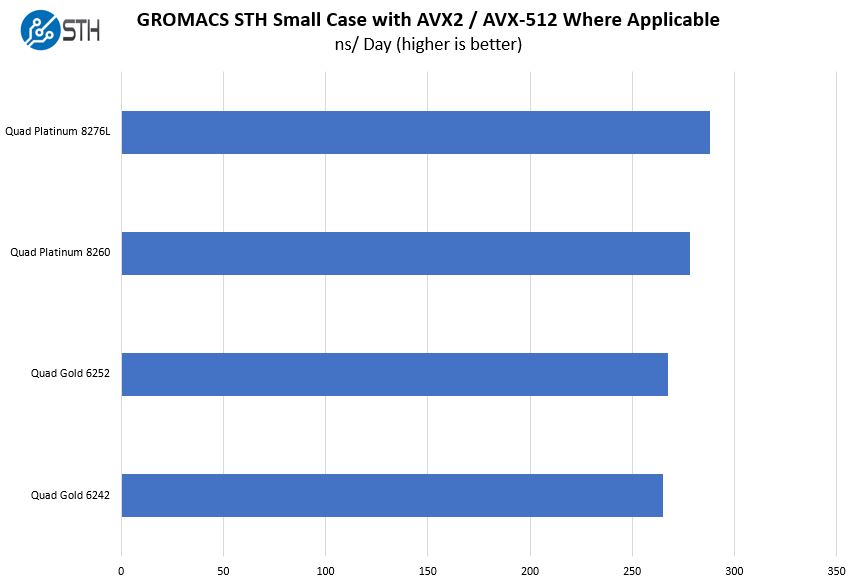
With a 150W TDP, we actually see the Gold 6242 catch up to the Gold 6252 here. This we attribute to AVX-512 thermal throttling and the TDPs of the chips. The Platinum 8260 has 15W more TDP headroom.
STH STFB KVM Virtualization Testing
One of the other workloads we wanted to share is from one of our DemoEval customers. We have permission to publish the results, but the application itself being tested is closed source. This is a KVM virtualization-based workload where our client is testing how many VMs it can have online at a given time while completing work under the target SLA. Each VM is a self-contained worker.
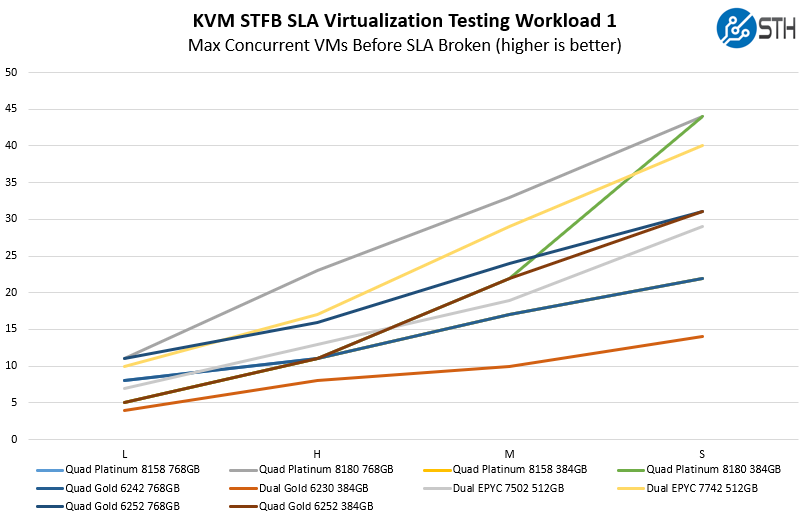
We added in a few of the legacy first-generation Xeon Scalable processor configurations as well as some AMD EPYC 7002 series configurations and even a dual Gold 6230 configuration here just to help with some additional data points.
Next, we are going to look at power consumption, our STH Server Spider, and give our final words.




Can Supermicro get STH a JBOF to connect to this to test? That’d be a neat combo.
Any tests planned vs. a 2P EPYC Rome system? Would be good to see the performance and power comparisons.
Hi MoreServersPlease. In these reviews, we focus on options that one can configure in the platform being reviewed. You may be looking for the CPU review which we published here: Quad Intel Xeon Gold 6252 Benchmarks and Review
Why exactly 3would anyone even think of using Xeon thesee days ?
It has more security holes than a swiss cheese, it’s relatively highly priced and with uncertain upgrade path.
What’s the point ?
Brane2: you can’t probably have number of DIMMS available in this system in any even dual cpu Epyc system. Otherwise you are absolutely right.
Compability with existing environment
Certain applications are certified only for Intel (e.g. SAP HANA, NFV apps using Intel DPDK)
4P 6230 are more cost effective than 2P 7742 – so if rack space, electricity & licensing is not an issue then Intel is still viable
Anyway – thank you very much Patrick for this test.
This is really clever design to turn some things around in order to make the platform more compact.
We bought Dells R840 and we had to buy deeper racks to accomodate them.
@Zibi
“Certain applications are certified only for Intel (e.g. SAP HANA, NFV apps using Intel DPDK)”
Both the software and the intel hardware have proven to have more holes than Swiss cheese.
Both have certified leaks. Some are by accident others are forced by the US-goverment (it’s hard to spy on Huawei, ZTE, etc.. hardware without US certified leaks).